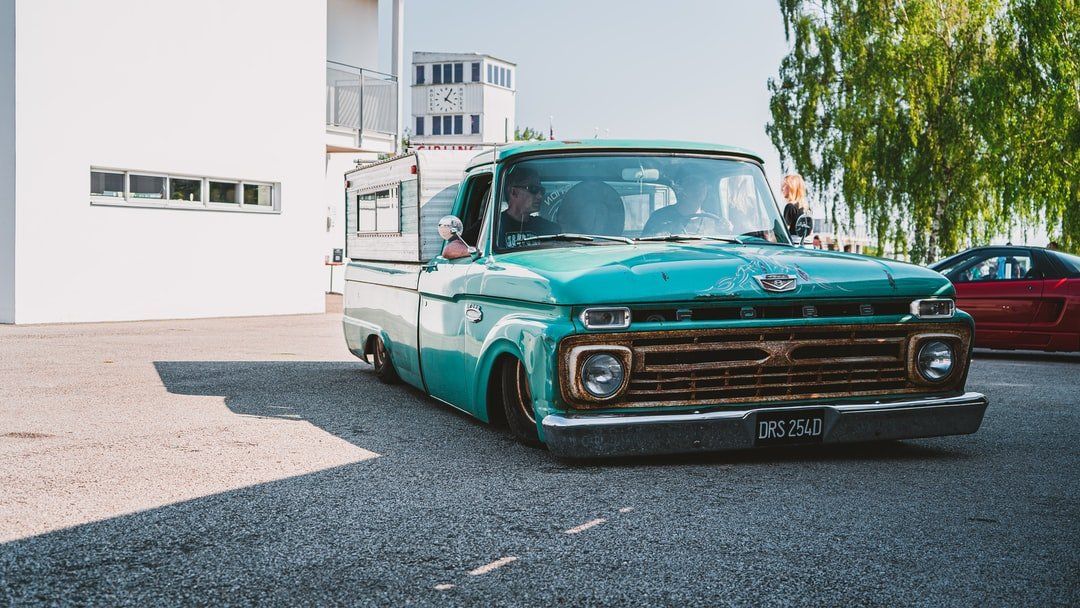
Lift, Lower and Level kits
Lift Kits
Off-roading, including desert racing, rock crawling, and trail busting, is becoming progressively more popular, and truck owners want to lift their rigs and join in the action. There are also those who travel miles every month to work on the rigs in Alberta, and those who tow regularly. If you fit into one of these groups, you can achieve the ground clearance, intimidating looks, and off-roading prowess you’re looking for with a high performance suspension lift kit. It’s easy with Westshore Spring & 4×4 Inc. We carry lift kits from Skyjacker, BDS, Zone Off-Road, Pro Comp, Superlift, Readylift, Rancho, Trail Master, Revtek, Rugged Ridge, and more! We have kits for trucks, SUVs, and Jeeps.
THE DIRT ON LIFT KITS
Knowing why you are lifting your vehicle and choosing the right lift kit to suit your purposes
is much more important than installing a lift kit based on a brand name.
The first thing to consider is what you are going to do with your vehicle once you have the lift kit installed. For example, are you going to use it for mud racing? Open country treks? Slow speed rock-crawling? High speed desert racing? Or are you just going to use it for looks and some basic four-wheeling?
There is a surprising amount of information to know before you get started. If you’re a seasoned veteran in the wheeling community who has conquered the most vicious terrains and knows your vehicle inside out, there probably isn’t much on lift kits for you to learn here. On the other hand, if you’re just getting started and want to familiarize
yourself with the basics on lift kits, read on.
Let's get started.
- Why should I lift my ride?
There are essentially two main purposes for installing truck lift kits: style or performance.
Although the two are somewhat interrelated, it’s still important to make sure that you are improving your truck, SUV or 4×4, not just making it look good. There is a lot you will have to think about besides installation, including the other modifications you will have to make on your vehicle such as gear ratios, brakes, suspension, drive shaft length, shocks, and so forth.
Installing truck suspension lift kits requires some hard work, a bit of technical savvy, and some upkeep and attention to your vehicle’s components.
- Style
People have been transforming their vehicles to make personal style statements since the first vehicles rolled off the assembly line. Adding lifts to a vehicle’s suspension system makes heads turn and impresses other motorists. Using the lift kit to look good and add style is the easy part of the job.
A truck owner needs to also realize that lifting the vehicle directly impacts the performance of the truck. When deciding on the number of added inches, the owner needs to determine how far the vehicle can be lifted without losing comfort, durability, reliability, or safety.
- Performance
Whether you’re just starting out or you’re an experienced professional, tuning your rig for optimum off-road performance is an expansive hobby with numerous factors to consider. The possibilities are limitless, which can sometimes make it hard to determine exactly which suspension lift kits are ideal for what you want.
- What does a suspension lift do?
Room for Larger Wheels
Perhaps one of the most popular reasons to install a lift kit on a truck is to be able to add larger off-road wheels. These wheels aren’t just for show (although some do look pretty cool) – they are tougher, last longer, and allow trucks to go off-road and drive through mud, snow, rocks and other rough terrain without any problems.
- Clearance advantages
Adding a lift kit to a truck will raise the suspension a few more inches from the road or trail. There are many reasons people wish to increase their truck’s ground clearance. Whether you are driving over boulders, slogging through mud, coasting across the desert, or even just making your way through the occasional forest trail, higher clearance makes negotiating obstacles easier.
- Improve towing ability
Improved towing capabilities is another advantage to lifting. A lifted truck will afford a better safety margin and weight advantage over the vehicle being towed, giving you better control. Please note that the improvement is only in reference to a mildly lifted truck. It is not recommended that you tow anything with a vehicle with an extreme suspension lift.
- Better view
The view is another advantage for lifting your truck. No, not the view of the truck, but the view from the truck! Looking out across the hood gives the driver a much better view of the road and what lies ahead, which better enables him or her to avoid or maneuver out of dangerous situations. The confidence increase while driving will also become evident!
- Better driving in bad weather conditions
Bad weather is another reason for lifting your suspension. A lifted truck could make your life easier if you live in a place that has harsh weather conditions on a regular basis. Riding higher can help during downpours and impassable roads, as well as making it easier to get through the snow, mud, and sand.
- Highway Performance
Larger, wider tires can sometimes result in instability on roads or a noisy, uncomfortable ride, particularly at high speeds. More aggressive off-road tires also tend to wear faster on the highway, and traction might not be as great as you would expect on wet roads. In this sense, larger tires can sometimes be a gamble without any direction from an experienced off-road veteran like our staff members.
- Weight
Larger tires are heavier, which can put a lot of strain on your suspension, particularly if it’s a stock suspension. Trusted, durable suspension components and lighter aluminum wheels can sometimes help to reduce the strain.
- Handling
Adding truck suspension lift kits will undoubtedly raise the vehicle’s center of gravity, resulting in less stable turns. This is a common issue when installing truck lift kits, but is mostly just a matter of becoming accustomed to a vehicle’s change in performance.
- Legality
Some suspension lift kits cause such extreme changes in your suspension system that they may not be legal. Check the suspension regulations within your country, state, or province to be sure.
- Additional modifications
Before installing a lift kit, it’s a good idea to first examine any components that could be affected by your vehicle’s new height. Here are a few items that may need to be upgraded:
Brakes:
Stock brakes can’t always accommodate larger tires, or will wear easily due to the added strain.
Drivetrain and Differential:
Axles, gears, differential covers, lockers and more ensure that your drivetrain is up to par with your suspension.
Replacement Parts:
Longer Control Arms and Track Bars to compensate for the additional height of your rig.
Shock Absorbers:
For those taller lifts, longer shocks will ensure the smoothest performance both on and off road.
Other Parts:
Steering linkage, slip yoke, drive shaft length, u-joint angle, and brake lines are all worthy of consideration before installing suspension lift kits.
We are here to help you make the correct decisions for your vehicle.
- Lift kit sizes
Small Lift Kits:
A small lift is 2″ or less, and will grant you a little more clearance and room to run slightly larger tires. The most common way to gain a small lift is by using coil spacers in front and add-a-leaf or blocks in the rear.
Advantages/Disadvantages:
Small lifts are inexpensive and easy to install with very few complications.
Medium Lift Kits:
A medium lift is roughly 3-6”, and is a good choice for those looking for the best tire clearance and look. The kits come with everything that you need (in most cases) to complete the lift and make it look good, though you can always add more! Having a truck that is ready to go off road can open up a whole new world to you and your family – you can get to those camping and fishing spots that nobody else can reach!
Advantages/Disadvantages:
This lift is a good choice for all-around use and is fairly budget-friendly.
Large Lift Kits:
The largest lifts are 6 to 12″ or more for an aggressive look and the best off-road performance. Large lifts are the most time-consuming and expensive lifts to complete properly. They require careful planning and often require custom made parts. It is highly recommended that you have professionals install large lifts.
Advantages/Disadvantages:
Large lifts are, as previously mentioned, the most expensive, and more complications are expected than with smaller lifts. On-road performance will also be affected, sometimes dramatically. A large lift will, however, transform your rig into an intimidating off-road machine that will stand out in a crowd.
Who should install it for you
There are two ways possible ways to go about installing a lift kit: install it yourself, or have a professional do the job. Naturally, each has its advantages and disadvantages, and when it comes to your rig, attention to detail is crucial.
Hiring a Mechanic
A licensed professional specializing in installing your lift kit is typically the best way to ensure that suspension lift kits are installed correctly, as long as you’re willing to pay the labour charges. A professional can perfectly tune your vehicle to your liking and ensure that all components are working as they should, all within a fraction of the time it would take even the most experienced gearheads to install it themselves. Any time there’s a functional deficiency or your vehicle needs minor tweaking, your mechanic is there to help.
It might be difficult, however, to find one you can trust to install the kit properly while not overcharging you for any unnecessary parts. It’s a good thing you know all about us now, because we won’t be charging you for anything you don’t need.
Many manufacturers offer manuals for installing truck lift kits onto certain vehicles; however, some installations are quite intricate, requiring some welding or cutting in order to add some necessary components. In this case, having a trusted mechanic is the best resolution.
Do-It-Yourself
Even if you’re not technically inclined, taking the time to learn the inner mechanics of your vehicle is a valuable experience that can save you money. An intimate knowledge of your rig can also allow you to make your own modifications to your vehicle if the need arises. There are numerous resources available that can usually guide you through the majority of the process; however, one must keep in mind that it’s a lot to take in, and tweaking the intricate components of your vehicle is no small matter.
It’s always a good idea
To have a second set of hands assisting you, even with the increasing availability of bolt-on kits, installing a suspension lift kit is no easy task, particularly if you’re a beginner. Additionally, certain instructions or resources can sometimes be misleading or are based upon the personal preferences of individual gearheads. You may find yourself spending hours tweaking the other components of your vehicle to get them back to spec after installing a lift kit. That’s a whole lot to take on, particularly if you’re inexperienced.
Lowering and Levelling kits
Whether you want to even out the ride height on your truck or slam your kit car to the ground, we have the parts, knowledge and workmanship to make it happen to the highest industry standard. Performance or comfort, we've got you covered.
Contact Us
Opening Hours
- Mon - Fri
- -
- Sat - Sun
- Closed

